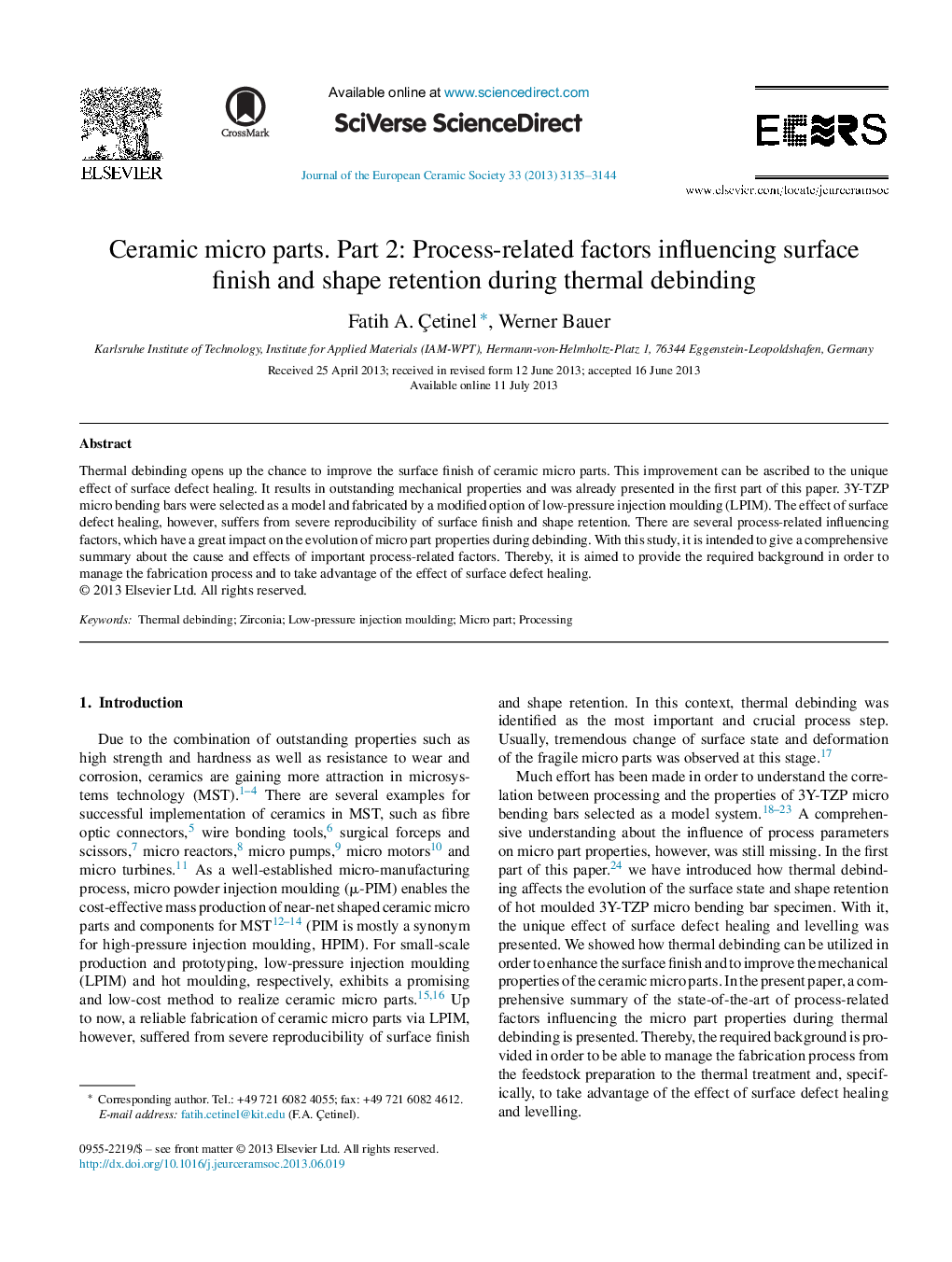| Article ID | Journal | Published Year | Pages | File Type |
|---|---|---|---|---|
| 7899103 | Journal of the European Ceramic Society | 2013 | 10 Pages |
Abstract
Thermal debinding opens up the chance to improve the surface finish of ceramic micro parts. This improvement can be ascribed to the unique effect of surface defect healing. It results in outstanding mechanical properties and was already presented in the first part of this paper. 3Y-TZP micro bending bars were selected as a model and fabricated by a modified option of low-pressure injection moulding (LPIM). The effect of surface defect healing, however, suffers from severe reproducibility of surface finish and shape retention. There are several process-related influencing factors, which have a great impact on the evolution of micro part properties during debinding. With this study, it is intended to give a comprehensive summary about the cause and effects of important process-related factors. Thereby, it is aimed to provide the required background in order to manage the fabrication process and to take advantage of the effect of surface defect healing.
Keywords
Related Topics
Physical Sciences and Engineering
Materials Science
Ceramics and Composites
Authors
Fatih A. Ãetinel, Werner Bauer,
